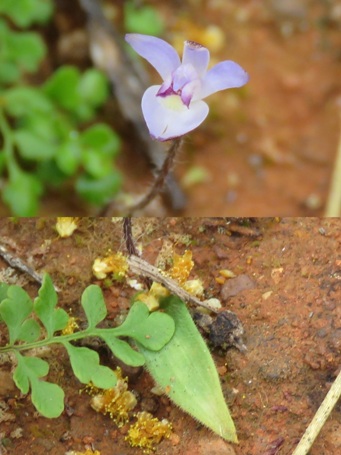Australia So Much to See


Cyanicula sericea 2000 (formerly Caladenia sericea), Silky Blue Orchid.
A shiny blue or purple five petalled orchid, around four
to five centimetres across. Hairy leaf shown below left.
Late September/October
Bridgetown, and found through
the South West, Great Southern, Perth, and into the Wheatbelt regions, and along the south coast to Esperance.












Cyanicula gemmata 2000 (formerly Caladenia sericea), Blue China Orchid.
A small blue five petalled orchid, around 1.5 centimetres across. Colours of petal and labellum vary. Hairy leaf shown below above right
September
Bridgetown and Tonebridge
(Boyup Brook), and found through the Mid West, Wheatbelt, Perth, South West, Great Southern regions, and along the south coast to
Esperance.






Crypto means hidden and stylis refers to the style, being the stalk between the ovary and the stigma which collects the pollen. This is hidden underneath the big red tongue or labellum, as the flower is upside-down, with the flower petals being the narrow green
ones at the base of the labellum.
Ovata means egg shaped, and usually refers to the leaves. Cryptostylis ovata is
the only orchid in the southern parts of Western Australia to have perennial foliage. They are easily identified due to a central
white line.
Like a number of Western Australian orchids, the shape and scent are to fool the pollinator wasp into thinking
it is a female wasp.

A tiny purple-blue
orchid, up to two centimetres across. This one has the two lower petals held close together so may be just opening. Lower
petals are normally held apart stiffly, and almost parallel to the ground. Central parts of this flower are similar shaped to
Cyanicula sericea, and have purple markings, with the labellum calli being yellow. Rear of petals darker and hairy. Leaf is
broad at base and tapers to a point.
August
Latham, Perenjori shire, Mid West region, Western Australia. Found
through parts of the Mid West, the northern Wheatbelt, into the southern Wheatbelt, and into the western parts of the Goldfields regions.
Cyanicula genus was created in 2000 and covers small blue orchids that were formerly known as Caladenia. Cyan mean blue, and
cula meaning small.